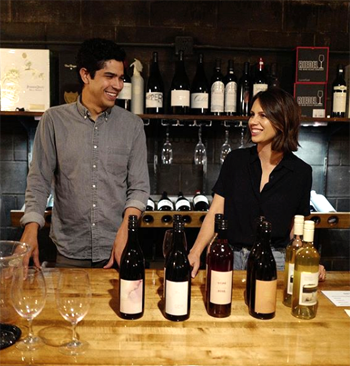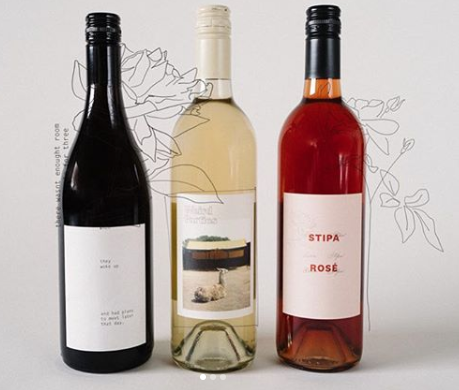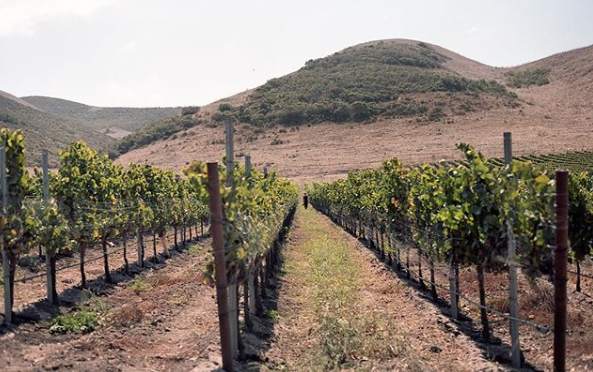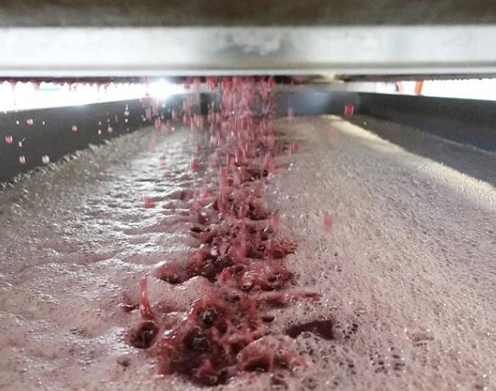Say When Wines
“Our winery name, Say When, is a moment. A statement that fills the space between the beginning and the end. Each of our bottles have a unique identity, just like the wines inside them. ”
What was your first vintage year? 2013, a single barrel of Pinot Noir.
How many cases do you make per vintage?
2013 – 25 cases
2014 – 75 cases
2015 – 50 cases
2016 – 125 cases
2017 – 275 cases
2018 – 625 cases (half still in barrel)
Do you have a Tasting Room?
We don’t have a tasting room yet, but we plan for as many events and private tastings as we can so we can meet customers in person. The best place to hear about our events is through our mailing list, and anyone can reach out to us at Rachel@saywhenwine.com or Michel@saywhenwine.com for a private tasting.
If not you, who is your winemaker?
Rachel is the winemaker with 10+ years of experience in wine production and agriculture. Michel joined in winemaking when he met Rachel in 2014, her first wine still in barrel. Since then, he’s helped out every harvest and together, they make fruit and winemaking decisions and steer the company in their shared vision.
What wine made you want to become a winemaker/start your own winery?
There wasn’t an epiphany bottle for Rachel, more a slow realization that the culture and artistry surrounding wine was the world she wanted to be apart of. For Michel it was tasting the 2013 RASI Pinot Noir in barrel.
What varietals do you work with? Which varietal/wine is your favorite to make? Why?
We started with Pinot Noir, but have been expanding our portfolio because of the amazing range that the central coast provides. A Mourvèdre we made from Paso in 2015 quickly became one of our favorites. Since then the vines have been replanted and we’ve been patiently working with the grower to release our next Mourvèdre in 2020 when the vines are ready. In the meantime, we’ve been producing a Rosé of Mourvèdre. In 2017 we did 24-hour skin contact and in 2018 we did 48-hour skin contact giving it a bit more characteristics of the grape.
What vineyards do you source from? Why?
Rose of Mourvèdre from Cass Vineyard on the east side of Paso. Grenache Blanc from Sarloos & Sons in Los Olivos. Chardonnay from Shokrian in Los Alamos. Pinot Noir from Spanish Springs in Arroyo Grande and Rancho La Vino in Sta Rita Hills. Petit Verdot from Russell Family on the South West side of Paso. Tempranillo from Martian Vineyard in Los Alamos
What type of oak treatment do you use? Why?
We use 60 gallon French oak barrels that have been used between 1-5 times. They give the wine character without taking anything away. Our lighter body wines such as Rosé and Grenache Blanc only require a few months in barrel where as our Pinot and Chardonnay benefit from 11 months in barrel. In certain cases, such as our Petit Verdot, we barrel age for 22 months to tame some of the bolder characteristics of the variety.
What do you love about your winemaking region? What makes it different special?
We’re in a unique area because we’re close to so many different climates and terroir. This gives us a wide variety of fruit and styles to work with.
What’s the story behind your winery name / label?
Our winery name, Say When, is a moment. A statement that fills the space between the beginning and the end. Each of our bottles have a unique identity, just like the wines inside them. RASI, the label that started it all that always uses the wine inside the bottle itself as the artwork.When, our second Pinot, tells a different story each vintage, representing a moment. Stipa Rosé was named for Michel’s grandmother, Rose Stipa. Sona Vino, describes our Chardonnay, literally translating into Gold Wine in Hindi and Italian, Rachel and Michel’s family heritage.Weird Parties is where we experiment.
What's the one thing you wish someone had told you about the wine business before you started your own winery?
Being a winemaker is a lot more than making wine.
Most importantly, what's so great about being small? What can you do as a small winemaker, that wouldn't be possible for larger wineries?
Control. Making wine is personal to us. Everything we put out into the world is our creation and getting to have a connection with our customers is very important to us.
How do you view the future in the wine industry for small-lot winemakers?
It’s definitely growing. We’re seeing more people from all different backgrounds get into wine which is driving innovation in the vineyard and the winery. From what people are planting and where, to the decisions in the winery.
If you had to choose another wine region to work in what would it be?
If we weren’t in the Central Coast, you’d probably find us in the Willamette Valley. Not only is it a beautiful state, the wines are exceptional as well. It’s a relatively young wine region, and has a lot of the same start up energy that you find in Central Coast.
For more information about Say When Wine, please visit their website.




